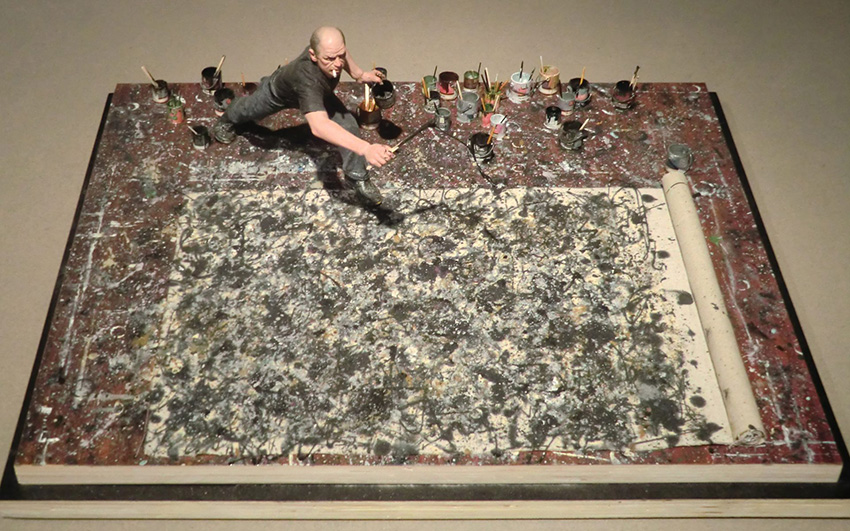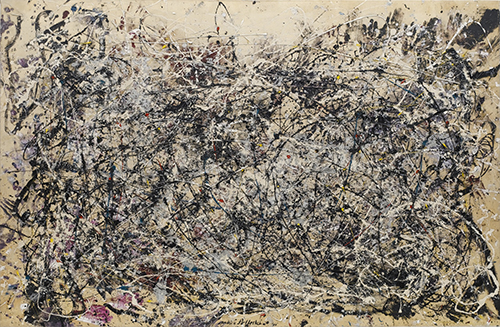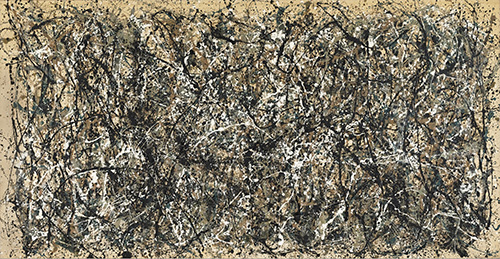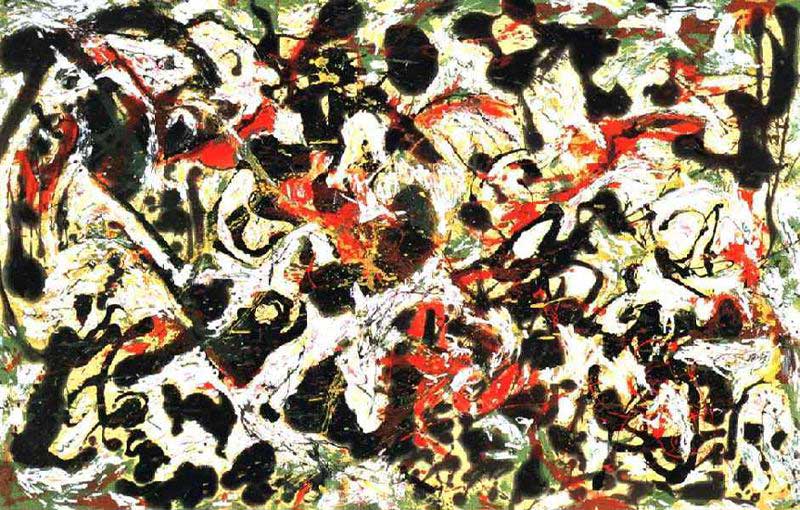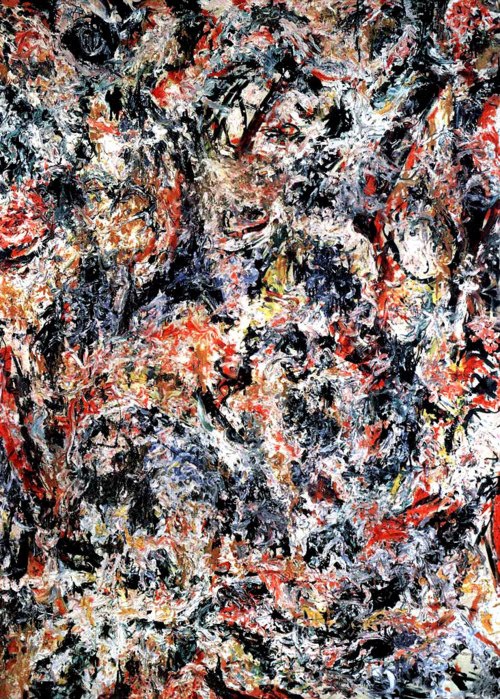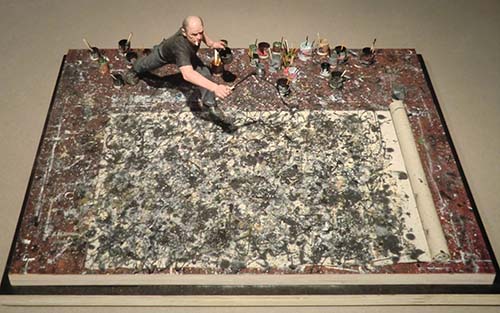
Jackson Pollock. Drip paintings and New York as a Capital of Art
ArtWizard, 22.07.2019
“When I am in my painting, I'm not aware of what I'm doing. It is only after a sort of 'get acquainted' period that I see what I have been about. I have no fear of making changes, destroying the image, etc., because the painting has a life of its own. I try to let it come through. It is only when I lose contact with the painting that the result is a mess. Otherwise there is pure harmony, an easy give and take, and the painting comes out well.” - Jackson Pollock, My Painting
In the post-war period, American painting, with irrepressible speed and self-confidence, began to play the leading role in the world of art. Not only European artists, but also European collectors began to increasingly orientate themselves towards developments in America. As the abstract Ecole de Paris produced ever more aesthetic variations on earlier pioneering achievements, the Americans disproved the still widely held hypothesis that abstraction was uniform, monotonous style. The contract between the delicate picture-writing Mark Tobey derived from East Asian calligraphy and the explosive gestures of Willem De Kooning, between Pollock’s action frenzied painting and Rothko’s meditative panels, could not have been greater.
All the artists, later labeled Abstract Expressionists shared the need to express themselves through the immediate, spontaneous act of painting. The old idea of the artist as a representative of his contemporaries took on a new pragmatic meaning of their works. In Action Painting, the gesture and resulting brush stroke express themselves, rather than any extraneous meaning, the process of the painting represents the content of the picture. In such works, the temperament and character of the artist, his joys and despairs, are revealed immediately, without recourse to the intermediary steps of developing a motif. And this is especially true for Jackson Pollock.
As the artist once said, he did not want to illustrate feelings, but to express them, spontaneously and immediately. The works of Pollock’s early phase are done in a livid and somber semi-expressionist style, with mannerist traits, recalling El Greco. For a certain time, the artist was excited by the bright art of the American Indians and their picture-writing, then by the monumental expressiveness of the Mexican revolutionary muralists Rivera, Orozco and Siqueiros.
Pollock’s painting is a dramatic art of expression. Even where Cubist formal elements still play a role, in every square inch of the canvas covered with thick impasto to the point of low relief, the spectator senses the artist’s pictorial signs for a sense of life that oscillated between exuberance and anxiety. In the place of ancient myths, we find archetypal symbols from the psycho-analysis of C. Jung. This is due to the fact, that because of alcohol problems, Pollock was under psycho-analytical treatment for a while.
When Pollock attempted to give form to his personal despairs, visions and neurotic fears, such desires led him to a method, with the aid of which he could give shape to his inmost nature, without recourse to any form of conscious design. As he had seen Siqueiros do, Pollock used to spread a length of unstretched canvas on the floor and let the paint onto it from the brush or strait out of a thin can. In this way, the principle of “dripping” was born, permitting the direct transmission of the artist thought and act into painting, by the means of what Max Ernst called “controlled chance”.
With immense concentration, precise observations of the paint trails, and a series of rapid decisions, there emerged the “web paint”, which became Pollock’s trademark. Many paintings were done as if in a trance. The results have an astonishing density and sometimes, baffling logic. The crucial factor is the artist ability to combine spontaneity with the sense of form to make a “a lyrical statement of the highest subtilty”, even using extremely robust means on enormous formats. Pollock himself explained that working on the floor gave him a sense of being closer to the painting and more a part of it.
As his method consisted of dripping thinned enamel paint onto an unstretched canvas, his direct physical engagement with the materials introduced gravity, velocity and improvisation into the artistic process and allowed lines and colours to stand alone, functioning entirely and independently of form.
His works came to be known as the “drip paintings” and presented less picture than a record of fluid properties of the paints itself. A though their self-reflexive nature, they entailed even larger interpretations. On can see the trill of space exploration and the threat of global atomic destruction as a moment of time in the Number 1A 1948 and One: Number 31, 1950.
He struggled with alcoholism all his life and in 1955 he painted his last two paintings, Scent and Search, before he died in a car crash accident under the influence of alcohol, leaving a significant mark of the post war abstract art in the new Capital of Art, New York.
One of his classic "drip" paintings is believed to have become the world's most expensive painting after it was sold in America by the Hollywood entertainment mogul David Geffen for USD 140 million. In a private deal brokered by Sotheby's, the painting 'No.5, 1948', has been bought by David Martinez, a Mexican financier. This price is believed to beat some of the record set by the cosmetics heir Ronald Lauder who paid USD 135 million also in a private sale for the portrait of Adele Bloch-Bauer of Gustav Klimt.
